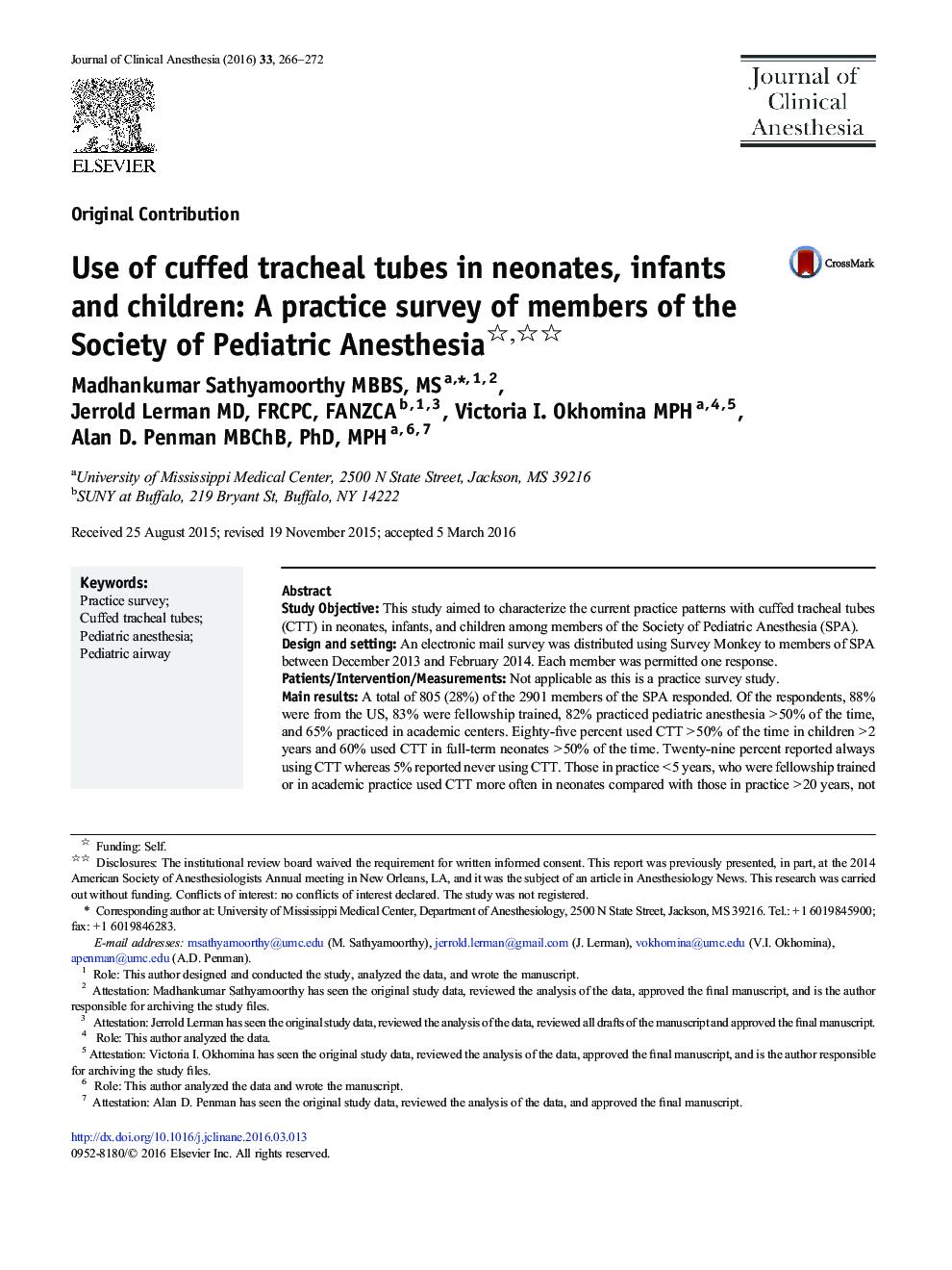| کد مقاله | کد نشریه | سال انتشار | مقاله انگلیسی | نسخه تمام متن |
|---|---|---|---|---|
| 2762114 | 1567657 | 2016 | 7 صفحه PDF | دانلود رایگان |
• Majority of the pediatric anesthesiologists are routinely using CTT in infants and children.
• Almost one third of them are routinely using CTT in neonates.
• The use of CTT is more prevalent among junior fellowship trained faculty.
• Majority do not check cuff pressures.
Study ObjectiveThis study aimed to characterize the current practice patterns with cuffed tracheal tubes (CTT) in neonates, infants, and children among members of the Society of Pediatric Anesthesia (SPA).Design and settingAn electronic mail survey was distributed using Survey Monkey to members of SPA between December 2013 and February 2014. Each member was permitted one response.Patients/Intervention/MeasurementsNot applicable as this is a practice survey study.Main resultsA total of 805 (28%) of the 2901 members of the SPA responded. Of the respondents, 88% were from the US, 83% were fellowship trained, 82% practiced pediatric anesthesia > 50% of the time, and 65% practiced in academic centers. Eighty-five percent used CTT > 50% of the time in children > 2 years and 60% used CTT in full-term neonates > 50% of the time. Twenty-nine percent reported always using CTT whereas 5% reported never using CTT. Those in practice < 5 years, who were fellowship trained or in academic practice used CTT more often in neonates compared with those in practice > 20 years, not fellowship trained or in private practice (P< .0001, P= .0003 and P= .0005, respectively). The most common reason for avoiding CTT was concern about post-extubation stridor (39%). Almost 70% of respondents accept the TT if it passes the subglottis without resistance and has a leak at 15 to 20 cmH2O. More than 60% of respondents do not monitor cuff pressures in CTT.ConclusionA majority of SPA members routinely use CTT in neonates, infants and children.
Journal: Journal of Clinical Anesthesia - Volume 33, September 2016, Pages 266–272
